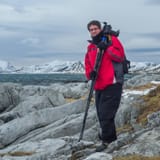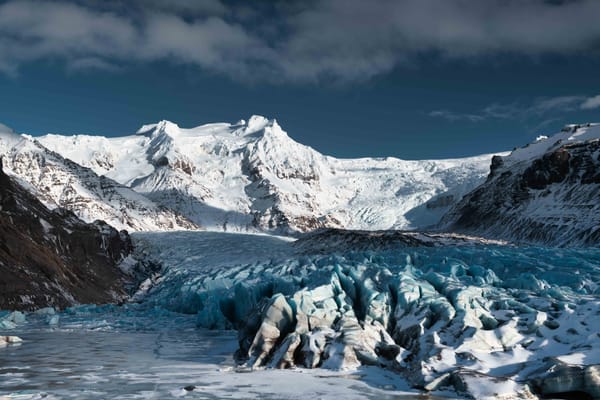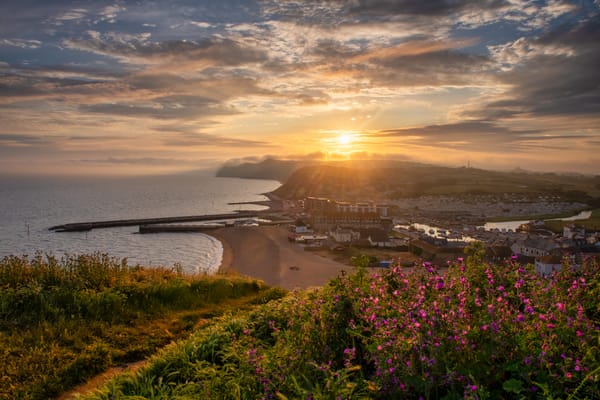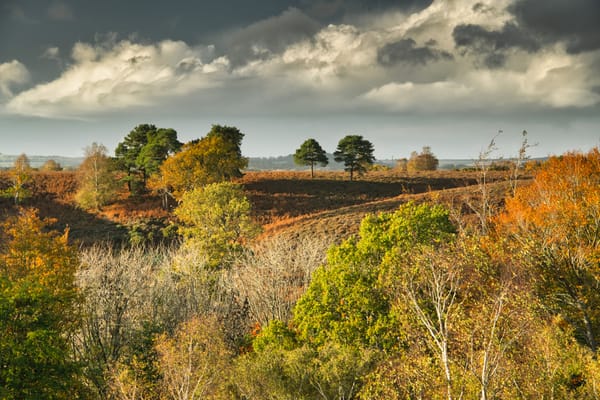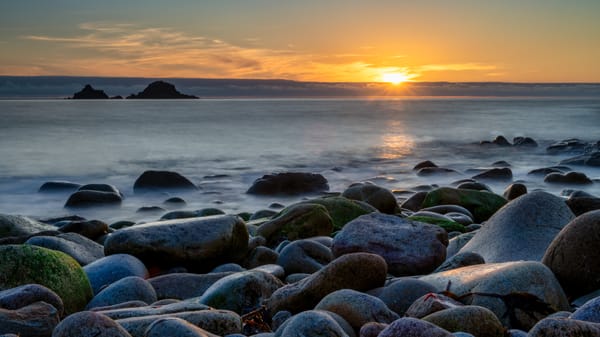Iceland Workshop - Day 5, 6 and 7
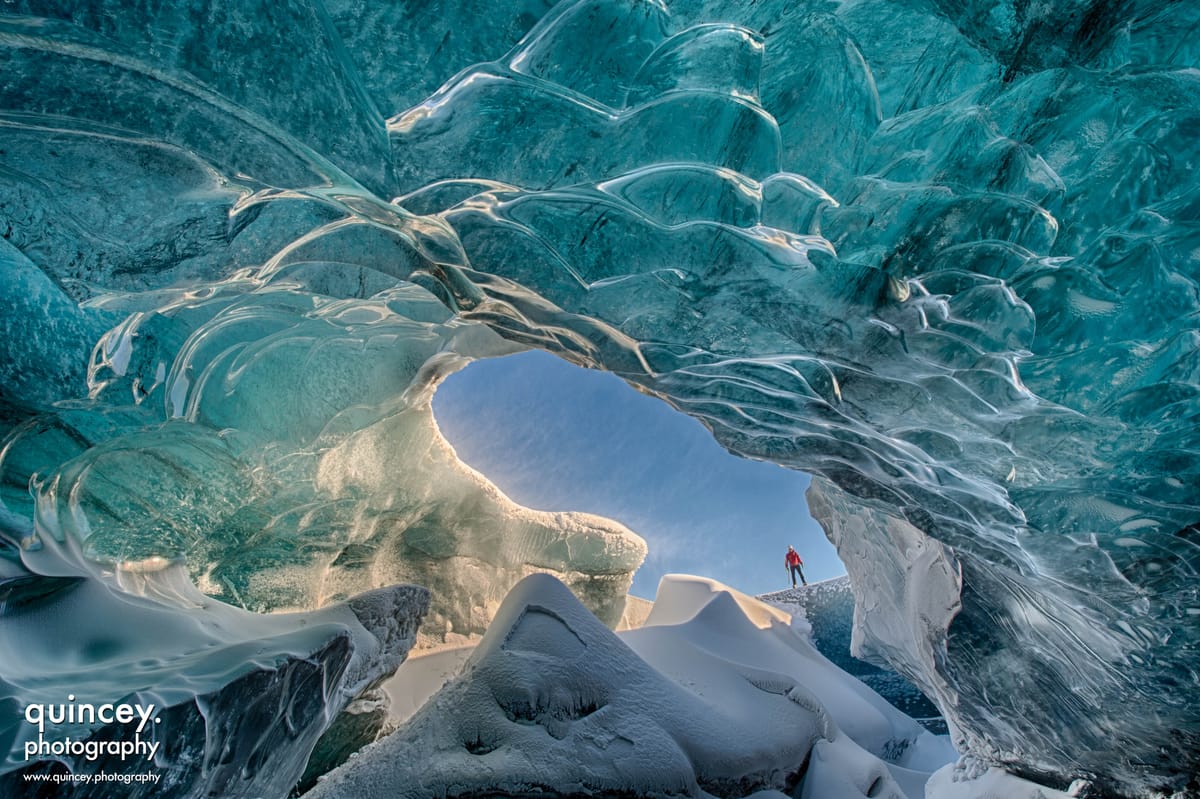
This blog is part of a series of blogs about my time on a landscape photography workshop run by Tom Mackie in Iceland. Read the first in the series about day 1 and 2 or the second about day 3 and 4.
Settle in folks, this is gonna be a long one, a lot happened these last few days!
Day 5 – Ice caves, reflections and frisky horses
Day 5 started with a trip to one of the most spectacular places I’ve ever been (quite a few of those in this part of the world).

This was taken in an ice cave which is essentially inside Vatnajokull glacier. The drive there was a pretty special experience on it’s own, with our guide (who was a bit of a legend) expertly driving across rough, 4×4 killing terrain in a modified people carrier. It’s hard to describe the feeling of being inside this place, so I’ll have to just stick another photo in.

As beautiful as it was it was a tricky one to photograph. There were three main elements working against us, first of all was the snow. There was an opening at one end of the cave that blew snow straight through the cave. It gave the ground a great, snow whipped texture and kept it looking fresh, but it was a nightmare trying to keep our lenses dry and snow free.
The second thing is the light. It’s actually pretty damn dark to the camera in here and there is a huge variation between the exposures needed to capture the ice and those needed to capture the detail in the snow or near the cave openings. I used bracketing in all of my shots, giving me brighter and darker overall exposures that I could combine into a HDR (High Dynamic Range) in post production, giving me the details in the brighter, snowy areas as well as the darker, icy areas. All of my final shots in the ice caves were HDRs, merged together using the excellent Google owned Nik Filters HDR Efex Pro.

The last problem was one I’d never even considered, sense of scale. It was really hard to get across the size of this place, in certain shots it looks cramped and claustrophobic, and in others it looks vast. To be honest it was both of those things in different areas, but getting across the right scale was tough, hence you’ll notice that there are people in every one of my shots. The people really help drive home the sense of scale and adds a nice human element to the photos that I never would of thought of before coming on this workshop. It’s also a lovely contrast seeing these beautiful, naturally created icy wonderlands offset against the very out of place, almost fragile looking humans with their hard hats and cameras.
Oh yeah, remember I said our cave guide was a bit of a legend earlier? Here’s the proof.

That’s him up there, on the edge of one hell of a drop, just to get us this shot. What a guy. This guy is also one of the only people to go around finding these ice caves for us to explore and making them safe, sometimes by shooting dangerous bits of ice with a shotgun. I’ll say it again, what a guy.
So, Ice Cave down, we headed to Hofn, had some lunch in a petrol station (hey, I never said this was glamorous) and found this spot, despite protests from Mike and me in the back of the van, as we were sure we were just driving down some random farmers track (we’d already been told off by some horse riders earlier for parking somewhere we apparently weren’t supposed to). Turns out we were wrong and were rewarded with this cracking view over a shallow lake.

How shallow you ask? Well here’s Tom (in my red jacket) in the middle of it.

We couldn’t let him go without at least getting a few decent poses out of him.


So the day was almost over. We did attempt to see the sunset at Stokksnes, but the land owner had made it a paid for location, obviously wanting to cash in on the increase in tourists. Fair enough, but we decided it wasn’t worth it and headed elsewhere. As it turns out the sunset didn’t happen anyway. We did get to see some more Icelandic horses though, which is always a treat, especially this fella who took a liking to Paul.

Day 6 – Iceberg beaches, Glaciers and The Aurora
So, day 6. Time to leave our lovely rooms at Hali Country Hotel and start heading back west. We got up early, skipped breakfast and headed straight for the Iceberg beach at Jokulsarlon again. This time we had a nice bit of sun breaking through the clouds. There were quite a few people on the beach already, although nowhere near as many as turned up later, so a couple of us headed a fair way along the beach and found a great Iceberg still standing around the crashing waves.

I used a remote trigger and a slow shutter speed and waited for the waves to get as high as they could before hitting the shutter, which captured the movement of the waves going backwards. If I had released the shutter as the waves were coming towards me the feeling of movement would of been lost under a blanket of white foam, but waiting until the water recedes gives it great definition.

This iceberg soon was lost to the sea, with the waves almost taking me and my camera with it. I wasn’t quite as quick off the mark as Mike who was stood with me and Tom when the waves came in and would have to put up with wet, black sand filled boots for the next hour or so. After that little misadventure we found this gorgeous, crystal-like iceberg a little further inland but still in reach of the waves and I managed to grab this shot before the waves once again caught me out. The photos were coming out great, but me feet were taking the punishment.

Anyway, onwards! And after returning to the hotel, changing my shoes and getting some breakfast we headed to Svartifoss, another of Icelands fantastic and numerous waterfalls.

It was a great little hike to get there, although shortly after taking this shot I was sent down to the bridge in my red jacket to be the sense of scale. If you ever go on one of these things, buy a black coat.
After this it was time to plan sunset. We headed to one of the many outlets of Vatnajökull glacier, just east of Svartifoss, and took a walk up the side of a small mountain that perfectly overlooked it. We had a great view of this frozen glacier outlet, and the sunset lit up the place a treat. It was slightly spoilt by hearing large chunks of nearby rock falling down the massive drop into the icy glacier below. Kept me on my toes I guess. It was a nice place to sit and watch sunset, even though I only got one decent photo out of it.

Just as the sun was setting I looked over to where Mike was standing with Alistair and Tom and he happened to be posing a perfect silhouette with his camera against a mountain that also happened to light up at that exact moment. I quickly swung round and grabbed the shot before Mike moved and the light faded away. Since I didn’t have time to switch to my 200mm Telephoto lens I had to quite heavily crop this to get rid of the useless and distracting elements around. I also darkened the foreground to make it a true silhouette, which I think made it much more stark and dramatic.
Aurora time!
So, sun had set and we were back at our hotel. End of the day right? Well, not this day, because this was an Aurora night. A night that I and the others had desperately wished would occur once on this trip. We knew there was one expected, and the conditions looked okay, if not perfect. We were planning to head to a ridge out the back of our hotel which overlooked some nice mountains, so we met outside with our cold weather gear, equipment and head torches (well, everyone else had head torches, I just had my superb night vision eyes…). We started walking but the clouds were out with little wind likely to push them away, so we headed back to check the weather conditions. As we were stood outside waiting for Tom and Alistair to check the weather conditions, I checked which way North was on my (well, my Dads actually) very handy Garmin eTrex GPS and Me, Mike, Peter and Paul looked up hopefully. Nothing but cloud. It was only when we turned around and faced south that we noticed the faintest green smudge in the sky. Mike, who had seen the Aurora before, confirmed that this was in fact the Aurora. So much for the ‘Northern Lights’ eh? Over the next few minutes the faint green smudge became marginally brighter and was extending slightly. We were on for a display, but the weather was still cloudy, so soon we bundled in the van and headed west where the skies were apparently much clearer.
I felt like a storm chaser, except less insane, but it was fun none the less, constantly looking out the windows to see what it was up to. The Aurora still wasn’t doing a huge amount, so when we found a clear spot by a nice Mesa like mountain we pulled over and waited. After a little while waiting it came out in force, and what a sight it was. We stood in the middle of and to the side of the road (it was one o’clock in the morning, no cars were coming) and started snapping. The set up to shoot an aurora is deceptively simple. Push the ISO as far as you dare (I use a Nikon D4 which handles high ISOs with ease), open up your aperture as wide as it goes, spin your focus ring to point straight in the middle of the infinity symbol and then start experimenting with your exposure lengths. I ended up settling for between 10 and 15 seconds for most of the exposures. Too long and you just get vague green smudges in the sky, too short and you probably won’t get enough light to get any detail, especially in the stars or your foreground. We were quite lucky in that we had an almost full moon out, which lit up the landscape perfectly without destroying our photos with glare.

This was one of the first decent shots I got. We were quite lucky to be able to capture the magenta tones you can see at the top of the frame. Normally you only get the green with maybe a smidge of this magenta. If you are super lucky you can see some quite strong reds and even blues, but to be honest, I was just happy to see it. It was mesmerising. Occasionally I’d just stop shooting and look up and around and remember how lucky I am to be out here and seeing this bizarre but awesome natural phenomenon. I was getting frustrated as I kept thinking my photos were ending up out of focus, even though I was sure I’d set the focus right. Turns out I was just being overly paranoid, but this was potentially a once in a lifetime event, I didn’t want to get it wrong.

It soon started getting even more active with these swirling shapes appearing above our heads. The words ‘wow’ and ‘look at that’ were being thrown around constantly. I know it probably sounds like I’m over-egging this a bit but I’m really not, if you have a chance to go see this thing, do it! The way it constantly changes is something that really surprised me, one moment it was like the shots above, the next moment I turn around and this is happening.

It was almost like an auroral lightning strike. I’ve also rarely seen Auroras in Portrait form, so this was my personal favourite by far. Plus it made a pretty sweet lock screen for my phone.
Soon we started having a bit of fun with it, trying to emulate some shots we’d seen with people in them. Here’s my attempt, with Tom summoning an Aurora, although he looks slightly like a robot with his red headtorch on.

So that was it, Aurora done, and the next day was mostly going to be driving back to Keflavik, ready for my departure. We did grab one last sunset at the sea stacks we visited on the first day, but I would rather end this blog series on the Aurora, rather than the okay-ish shot I got down there. The others were staying for a few more days, but by all accounts the weather mostly sucked, although they did see one more Aurora and got some great shots in between some hair raising travelling. But I didn’t care, I was done. As someone who had not really done any proper landscape photography this was a pretty intensive experience, and I was all Landscaped out. Still, it had been a great week with great people who I learned ridiculous amounts from, and hopefully got some good shots to show for it. I hope you enjoyed reading this and the others in my series. If you did I’d love to hear your thoughts in the comments section, and remember you can also like my Facebook page, follow me on Instagram or follow me on Twitter for more of my rambling, semi-readable thoughts.
